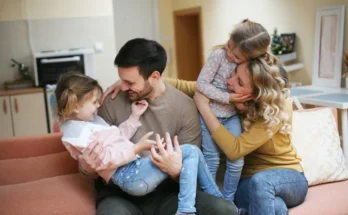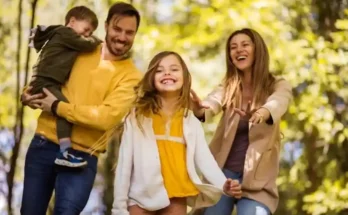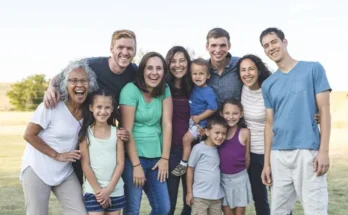Family is more than a group of people connected by blood or name. It is a complex, evolving narrative, woven from shared history, emotion, conflict, and care. Whether big or small, traditional or unconventional, loud or quietly present, every family is a universe of its own—unique, beautiful, flawed, and resilient.
In an era of constant change, where technology can separate us as much as connect us, the role of family remains deeply human. It anchors us. Challenges us. And often, saves us in quiet, unseen ways. Let’s take a walk through the soul and story of what family really means in today’s world.
The Roots We Grow From:
-
More Than Blood and Name
At first glance, the word “family” might conjure images of parents, siblings, grandparents—those who share your last name or your childhood home. But the definition of family is much broader. It’s found in the friends who stood by you when relatives didn’t, the teacher who guided you like a parent, or the neighbor who became a sister in all but DNA.
Family, in its truest form, is about commitment and care. It’s about the people who show up—not just for celebrations, but in moments of need and silence. These are the people who understand your inside jokes, your quiet fears, and your hopes for something more.
-
The Cultural Tapestry of Family
Across the globe, the shape of family changes with language, history, and tradition. In many Eastern cultures, family includes multiple generations living under one roof, with a strong emphasis on elders. In the West, nuclear families and chosen families are increasingly common.
This diversity in structure shows that family isn’t defined by geography or social norms. It’s defined by love, responsibility, and the roles people willingly take in each other’s lives.
The Heartbeat of Everyday Life:
-
Love in the Little Things
The most powerful moments in family life often go unnoticed. A packed lunch. A text checking in. A shared silence on the couch after a long day. These are the quiet rhythms of care that define a family—not grand gestures, but everyday love.
In the chaos of daily schedules, misunderstandings, and the occasional slammed door, these small gestures are what hold families together. They are reminders that even when life feels fragmented, love still lingers in the background.
-
Rituals That Bind
Every family has its own rituals—Sunday dinners, movie nights, birthday traditions, inside jokes passed through generations. These rituals act like glue, creating continuity across time. Even families separated by distance often find ways to maintain these rituals, sometimes reinvented through video calls and shared digital calendars.
Such traditions give the family its emotional architecture. They create belonging, predictability, and memory—things that anchor us in a fast-spinning world.
The Unspoken Battles:
-
When Love Hurts
No family is perfect. The deeper the love, the sharper the hurt can sometimes be. Arguments flare. Words wound. Silence grows. Family conflict can feel more intense than any other because it strikes at the core of who we are.
Parents may misunderstand children. Siblings may drift apart. Generational gaps create tension between old values and new identities. These moments are painful, but they are also opportunities—opportunities for understanding, forgiveness, and growth.
-
The Power of Repair
What makes a family strong isn’t the absence of conflict, but the ability to heal. The courage to apologize. The strength to forgive. Sometimes healing comes through words; sometimes it comes simply through staying.
Therapy, communication, and time often help families navigate through rough patches. But more than anything, it’s the decision to keep trying that makes a family truly resilient.
Families of Choice:
-
Redefining What It Means to Belong
Not everyone is born into a safe or loving family. For many, family must be created rather than inherited. Chosen families—made up of friends, mentors, partners, or communities—offer the same support and love as traditional kinship, often more.
LGBTQ+ individuals, immigrants, foster children, and many others have shown the world how powerful and transformative a chosen family can be. These bonds are forged not by obligation, but by trust and mutual care.
-
Community as Family
In today’s world, where mobility and technology often separate biological families, community often steps in to fill the gap. Neighbors become godparents. Coworkers become siblings. A support group becomes your safety net. Community-based family isn’t a fallback—it’s a new model of resilience and emotional interdependence.
Family in the Digital Age:
-
Technology’s Double-Edged Sword
Technology has reshaped the way we experience family. Video calls connect us across continents. Group chats keep generations in sync. Social media lets grandparents see their grandchildren grow up in real time.
But it’s not all rosy. Digital overload can sometimes replace real presence. Texts can miscommunicate feelings that a hug would resolve. Screens can become walls instead of windows.
The challenge now is to use technology to deepen, not dilute, our connections. Family in the digital age must be intentional—not just about staying in touch, but about truly staying connected.
-
New Frontiers
From co-parenting apps for divorced parents to digital time capsules for preserving family memories, the digital age is creating new tools to support family life. Even grief has gone digital, with memorial pages and virtual vigils becoming part of the mourning process.
These innovations reflect an important truth: no matter how the tools change, the need for family—its comfort, continuity, and shared story—remains constant.
Legacy and the Future of Family:
-
What We Pass On
Family is not just about the present—it’s about legacy. The stories told at dinner tables. The values repeated over generations. The recipes, heirlooms, and photos tucked into albums. These are not just relics; they’re living history.
Whether you’re passing down resilience, language, traditions, or lessons learned the hard way, family is the thread through which legacy moves forward. It’s how we make meaning out of the past and give purpose to the future.
-
The Evolving Shape of Family
The future of family is flexible, inclusive, and diverse. Single-parent homes, child-free couples, multi-generational households, same-sex parents, long-distance families—all are valid, vibrant expressions of what it means to belong.
What matters isn’t the configuration. It’s the care. The support. The showing up. As society evolves, so too must our understanding of what makes a family whole.
Conclusion:
Family is not static—it grows, shrinks, breaks, and heals. It moves with us, even when we try to outrun it. It teaches us how to love and how to forgive. It frustrates us, shapes us, grounds us, and, at its best, gives us a place to come home to—physically or emotionally.
In the end, family is not defined by perfection. It’s defined by presence. By trying. By growing. And by loving in ways that sometimes only make sense in the quiet language known only to those who share it.
Whether you find your family in a childhood home, a chosen tribe, or the people you build your future with, know this: family is not just who you are born with. It’s who you hold on to.




